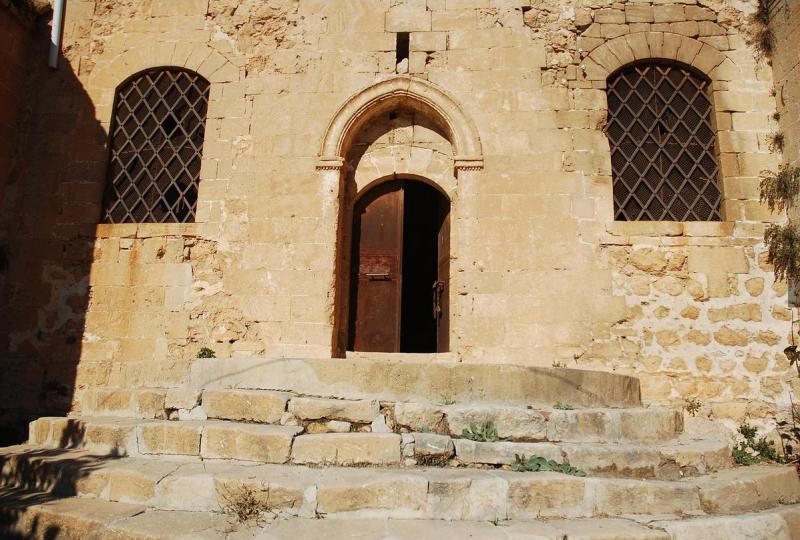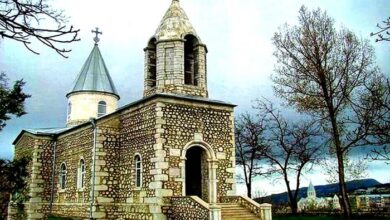
The Roman amphitheatre in Durrës in Albania, the buffer zone in the historic centre of Nicosia in Cyprus, the 17th century Vauban’s fortifications in Briançon in France, the Renaissance monastery of San Benedetto Po in Italy, the 15th century monastery in Setúbal in Portugal, the historic mining landscape of Rosia Montana in Romania and the Armenian church of St. George in Mardin in Turkey have been selected as the 7 most threatened landmarks in Europe.
The announcement was made by the leading European heritage organization Europa Nostra, together with the European Investment Bank Institute, at a press conference in Athens, on the eve of its 50th Anniversary Congress. These gems of Europe’s cultural and natural heritage are in danger, some due to lack of funds or expertise, others due to inadequate planning, neglect, natural disaster or even political conflict. An urgent action is therefore required.
“These monuments and sites were selected not only because they tell a fascinating story about our shared past, anchoring a sense of belonging to a European family, but also because they are highly valuable to the local communities who are strongly engaged in saving them. Rescuing these sites would also act as a catalyst for the social and economic revitalization of entire cities or areas. This is why Europa Nostra calls upon many public and private partners, at local, regional, national and European levels, to join their forces and ensure a promising future the selected sites,” stated Plácido Domingo, President of Europa Nostra.
The 7 Most Endangered Heritage Sites in Europe
Roman Amphitheatre of Durrës in ALBANIA
This early 2nd century AD Roman amphitheatre remained unknown to the world until the 1960’s. Located in the very centre of the city, known in antiquity by the name of Epidamnos or Dyrrachium, and with a capacity of 15.000 to 20.000 spectators, it is one of the most remarkable heritage sites not only in Albania but in the whole Balkan region.
Due to its late discovery, the monument has endured chaotic urban planning, which affects its structure, and has suffered from continued deterioration. The major challenge is therefore to ensure its successful integration into the urban fabric of Durrës. This heritage gem is also threatened by lack of financial resources, natural causes and neglect. Encouraging current research projects and raising public awareness about the exceptional value of this amphitheatre are steps to be urgently undertaken.
Its subsequent complete restoration would not only put the ancient city of Durrës back on the map of historic sites in Europe but also trigger the social and economic revitalisation of the second biggest city in Albania.
Buffer Zone in the Historic Centre of Nicosia in CYPRUS
The aftermath of the Cyprus dispute saw the creation of the Nicosia buffer zone in 1974, which cuts across the historic centre and has disrupted the city’s cohesion for almost 40 years. Decades of abandonment have undermined the high architectural value of the buildings, among which are medieval and neoclassical monuments, and have had a devastating impact on the quality of the environment and living conditions of the entire city centre. Once the focal point of crafts and trade, the heart of historic Nicosia is today a lifeless corridor of 1.5 km.
Since 1980’s, the Greek Cypriot and Turkish Cypriot communities of Nicosia have worked together, also with the support of the United Nations, to produce a Master Plan for the revitalisation of the buffer zone. International assistance is today needed to start with its implementation by restoring one by one historic buildings located in the Nicosia buffer zone.
This important Master Plan, which is a brilliant example of cultural heritage acting as a catalyst for peace and reconciliation, received in 2011 a Grand Prix in category research as part of the European Union Prize for Cultural Heritage/Europa Nostra Awards programme.
17th Century Vauban’s Fortifications in Briançon in FRANCE
Sitting at the crossroads of five alpine valleys at the gates of Italy, Briançon is one of the most spectacular fortified cities in France. In 17th century, Sébastien Le Prestre de Vauban, the renowned military engineer of King Louis XIV, was entrusted with the challenging task to design these mountain fortifications. This defensive complex is comprised of urban walls, which spread over more than three kilometers; three forts (Randouillet, Dauphin and Trois Têtes) on the left bank of the Durance river, which are interconnected to the city by the Communication Y and the Asfeld bridge; and a fourth fort (Salettes) located on the right bank of the river.
This masterpiece of mountain fortifications, considered to be one of the finest in the world and recognised by UNESCO in 2008 as part of the network of 12 fortified ensembles designed by Vauban in France, is today seriously threatened by the degradation of the rocky foundations, severe frost and lack of maintenance in general.
The municipality of Briançon has developed an ambitious strategy for the restoration and promotion of its heritage, relying, among others, on the support of local organisations. However, this economic and touristic development plan, based on the revitalisation of Vauban’s fortifications, can only be implemented with national, European and international support and expertise.
Renaissance Monastery of San Benedetto Po in ITALY
The small city of San Benedetto Po owes its historical, religious and artistic reputation to the namesake abbey complex, which dates back to the 11th century. The main buildings were designed in the 16th century by the Italian architect Giulio Romano, who is also the author of the Palazzo Te in Mantova and is known as the only Renaissance artist mentioned in Shakespeare’s work.
During the last decade, an extensive and costly restoration returned this masterpiece to its former splendour. The work was largely completed when the earthquakes of 20 and 29 May 2012 struck, severely damaging the abbey and setting back the entire process of conservation. Since then, large parts of the complex have become inaccessible to the public due to the risks of falling debris or collapse.
The restoration of the Monastery of San Benedetto Po is a huge challenge, both in financial and tecnhical terms, which requires widespread cooperation and mobilisation.
15th Century Monastery in Setúbal in PORTUGAL
The Monastery of Jesus in Setúbal, the building of which was concluded in 1494, is one of the first examples of the Portuguese Late Gothic style, known as the Manueline style. This style skillfully incorporates maritime elements and representations brought from the pioneer voyages of the Portuguese discoverers. World known – and much better preserved – examples of this architectural style are the Monastery of Jerónimos and the Tower of Belém in Lisbon.
Recognised as a tangible witness of Europe’s shared history – having served as the setting for the ratification of the signature of the Treaty of Tordesillas in 1494 between Spain and Portugal, which paved the way for Europe’s expansion both to the Americas and to the Far East – the European Commission decided in 2011 to attribute to this exceptional monument the “European Heritage Label”.
This gem of our common heritage has been basically closed to the public for more than 20 years and is in an advanced state of decay, which urgently calls for European expertise and financial support.
The complete restoration of this ensemble would also act as a catalyst for the social and economic revitalisation of the historic city centre of Setúbal.
Historic Mining Landscape of Rosia Montana in ROMANIA
The landscape of Roşia Montană has been masterfully transformed by mining activities for more than three millennia. The subterranean heritage consists of a vast gallery network (some 150 km, out of which 7 km from Dacian and Roman times) and in situ equipments and artefacts. The surface habitation vestiges (Roman funerary sites, edifices and roads, as well as medieval and modern areas) demonstrate an intense interaction between man and its environment along centuries.
The mining landscape of Roşia Montană, one of the most representatives in Europe, is today seriously threatened by a large-scale, open-cast gold mining project.
The local NGOs, supported by national, European and international heritage organisations, has campaigned against this project for years. They all call for an alternative and sustainable solution, a long-term social and econonomic development plan based on the preservation of Roşia Montană’s unique assets: the mining landscape with its cultural and natural heritage.
Armenian Church of St. George in Mardin in TURKEY
For 15 centuries the Church of St. George was the spiritual home of the large Armenian community in the Turkish city of Mardin. This Grade I registered historical building was founded in 420 AD and was in use until 1915, when the Armenian population left the city. In spite of its outstanding historical and cultural importance, this monument is currently in an advance state of decay.
Europa Nostra Turkey, with the support of the owner, the Mardin Armenian Catholic Church Community Foundation, is strongly committed to rescuing this tangible witness of Turkey’s multi-cultural history. The preservation of the church and its annexes would enable the future generations to understand the contribution of Armenian people to Mardin’s history and identity and, at the same time, allow a wider public to appreciate their cultural expressions and artistic achievements. The local authorities, who are also aware of the economic advantages from future tourism development, are supportive of restoration projects in their town, but their endeavours need to be encouraged and supported by national and European partners.








